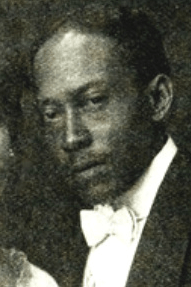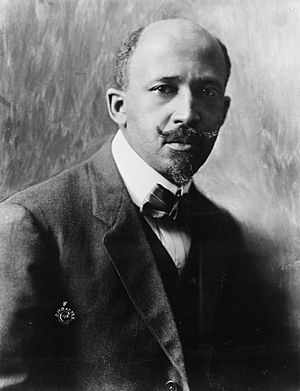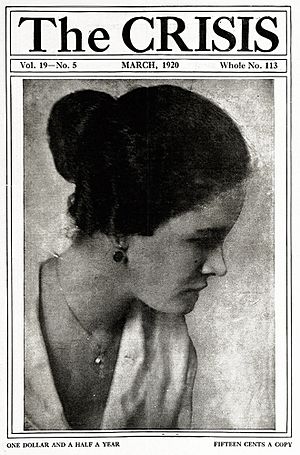C. M. Battey facts for kids
Cornelius Marion Battey (born August 26, 1873 – died March 14, 1927) was an American photographer. He was known for taking artistic portraits of Black Americans. His photos of important Black leaders often appeared on the cover of The Crisis magazine, which was published by the NAACP. Later, he started and led the photography department at the Tuskegee Institute.
Contents
Early Life and Photography Beginnings
Cornelius Marion Battey was born in Augusta, Georgia, on August 26, 1873. He grew up in the northern part of the United States. His first job in photography was at a studio in Cleveland, Ohio.
Later, he moved to Manhattan, New York City. He worked for six years at the Bradley Photographic Studio on Fifth Avenue. There, he was the superintendent, which means he managed the studio. After that, he worked at Underwood & Underwood, a very successful photo studio. He was in charge of the retouching department, where photos were carefully edited to look their best.
Battey's Photography Studio
Cornelius Battey eventually opened his own business in New York City. It was called Battey and Warren Studio, and he ran it with a white partner. He took beautiful, artistic portraits of Black people, both famous and everyday individuals.
One of his earliest known photos is of Frederick Douglass, taken in 1893. This was just two years before Douglass passed away. Battey's style was called "pictorialist." This meant he used soft focus and carefully edited his photos. He would smooth out any imperfections to make the portraits look perfect.
Photographing Leaders
Battey became friends with W. E. B. Du Bois, who was the editor of The Crisis magazine. This magazine was the official publication of the NAACP. Battey's portraits of important Black American leaders started appearing regularly on the cover of The Crisis.
He also took cover photos for other magazines, like The Messenger and Opportunity. As his fame grew, he also photographed white leaders. These included President Calvin Coolidge and United States Supreme Court Chief Justice William Howard Taft.
Around 1900, Battey began taking many pictures of Booker T. Washington. He continued this work until Washington's death in 1915. Battey was one of two photographers Washington trusted most, especially when traveling. Battey's photos were formal and quiet studio portraits. This was different from the more casual, journalistic style of the other photographer, Arthur P. Bedou.
Work at Tuskegee Institute
In 1916, Battey became the official photographer for the Tuskegee Institute. Booker T. Washington had been the first principal of this school. The school liked Battey because they wanted to start a photography department. Battey had connections with Eastman Kodak, a famous camera company. Its founder, George Eastman, had supported Tuskegee for a long time.
Eastman donated money to create the new photography department. Battey then led this department until he passed away ten years later. Battey taught photography classes to students. At the same time, he took many pictures of the campus, its students, and its teachers. This created a special record of Black college life in the early 1900s. One of the photographers he taught was P. H. Polk.
While at Tuskegee, Battey created a special print that connected four famous African Americans with George Washington. This was a way to show the important place of Black Americans in history. The print was first called Five Negro Immortals. In 1911, it was published as Our Heroes of Destiny. It featured Du Bois, Booker T. Washington, Frederick Douglass, and Paul Laurence Dunbar. This project was very expensive for Battey. Even though he sold cheaper versions and individual portraits, he lost a lot of money.
In 1921, the New York Public Library's branch in Harlem held its first art show featuring Black artists. It was called "The Negro Artists." Battey was one of only two photographers whose work was shown there.
Later Years and Legacy
Cornelius Battey passed away on March 14, 1927. His wife, with whom he had three children, had died earlier in 1912.
After Battey died, his photo negatives were stored in poor conditions. Sadly, this caused them to be destroyed over time. Because of this, the Tuskegee Institute now has only a few surviving prints from Battey's many years of work.
In 1989, Battey's photographs were part of an art show. It was called "Black Photographers Bear Witness: 100 Years of Social Protest." The show was held at the Williams College Museum of Art.
Images for kids
]







